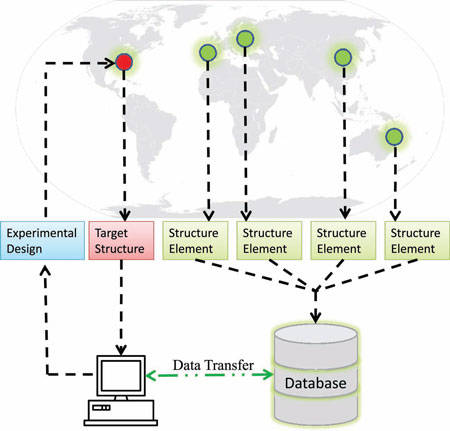| Nov 02, 2011 |
Initiation of a database of functional micro- and nanostructures
|
|
(Nanowerk News) Writing in a recent issue of Small, Professor Ned Thomas, Dean of Engineering at Rice University, proposes the setup of a database of functional nanostructures ("Initiation of a Database of Functional Micro- and Nanostructures").
|
 |
| The schematic of the database system incorporating structures uploaded by researchers. A user can upload a target structure which will be compared with the database structures. The most similar database structure is output with structural information such as experimental fabrication method and physical properties. (© Wiley-VCH Verlag)
|
|
Periodic micro- and nanostructures are of importance in a variety of fields, including photonic crystals, phononic crystals, data storage devices, fuel cells, microfluidics, biosensors, tissue engineering, optical devices, impact absorption microtrusses, plasmonic metamaterials, and energy applications including solar photovoltaics.
|
|
Although there are extensive ongoing investigations on functional micro- and nanoperiodic structures, there is at present no system to comprehensively classify, store, process, and analyze the various functional structures that are continually emerging from these exciting research areas.
|
|
Structure database systems have been established for proteins, chemicals, crystal structures, minerals, biotechnology information, standard references, and drug designs. There has been an effort to design a unified nomenclature for engineered discrete nanoparticles, which includes the composition, size, shape, core, ligand chemistry, and solubility.
|
|
In his article, Thomas and first author Lin Jia propose a database system which connects the morphologies, fabrication technologies, and physical properties of various 2- and 3D periodic and quasiperiodic functional micro- and nanostructures. The advantages of the database system include: 1) enabling the design of lithographic procedures for fabricating a given target structure; 2) finding the structure with an extremized objective function; and 3) analyzing the impact of the morphology on various physical properties.
|

